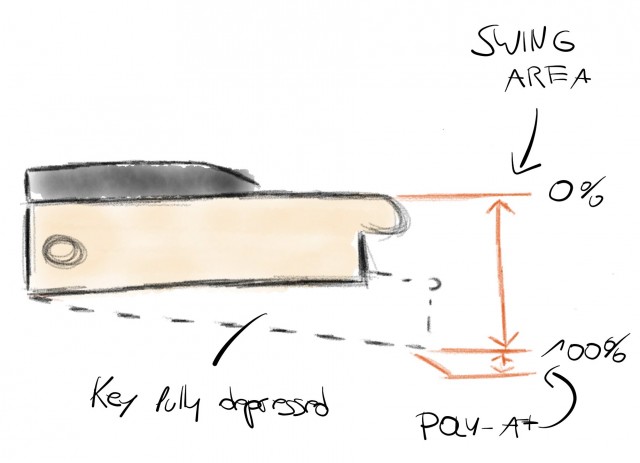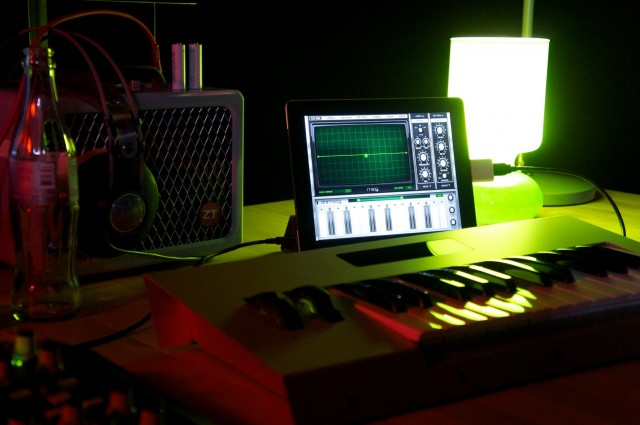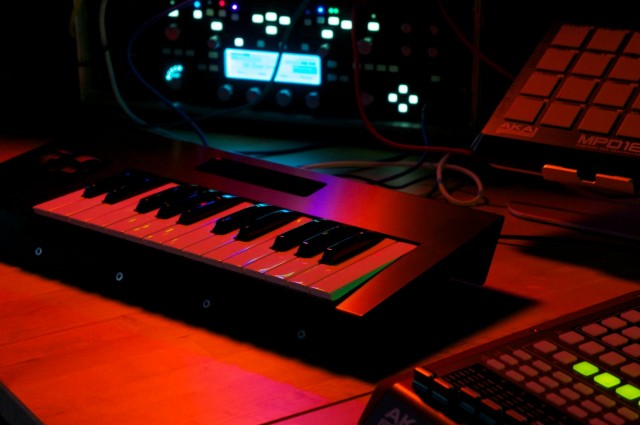The centuries-old piano keeps fighting back every time someone tries to improve it.
Case in point: polyphonic aftertouch. The cause for something new was straightforward enough. On a normal piano, you lose expressive possibilities once you play a note. Because of the necessity of the way hammers work, your fingers are left holding down keys and doing, well, nothing. The piano continues to do beautiful things with the sound – resonating and such – but you’re no longer involved. after you depress a key, keep pressing down to add additional expressive input. (Various historical devices have used everything from keys that wiggle to additional strings and pulleys and ribbons and wheels and … well, this problem just goes on and on.)
The problem with aftertouch is, you don’t have much play after you’ve pressed the key. And so that can make aftertouch rather unsatisfying.
The NDVR is different. It uses something the inventors are calling “key swing.” Instead of only the normal velocity measurement, the keys are constantly sampled with optical sensors, you can now do what intuitively it seemed you always should be able to do. You can move the key up and down across its full range, or push a little harder, and output a continuous, accurate value. (You still get the conventional velocity reading and can play normally in that sense – you simply get more data in addition to it.)
It’s easiest seen in the video, but it means you finally get to use the full play of a key as a controller.
The project is the work of the Vreden, Germany-based team that built the Endeavour touch keyboard. That project was beautiful and compelling, but it was likely too experimental for most keyboardists. It had elongated keys and touch strips on the surface, requiring players to completely rework their playing style. Playing the NDVR, by contrast, is the same as playing a conventional piano or synth keyboard: it has conventional keys, size, and play, but just captures more of what the keyboardist is actually doing.
Oh, yeah: and the NDVR will also cost less and work with your existing software, without any fiddling. It still has an aluminum case (they do like their aluminum), but uses a class-compliant USB MIDI interface and transmits data as standard polyphonic aftertouch MIDI messages. In other words, you can use it out of the box without installing any drivers or special tools. (There is a custom VST/AU plug-in, though, to push it further if you like.)
Pricing begins at just US$235 for the 25-note version.
The catch: you’ll have to wait. The makers are getting prices low by ramping up production, and paying for that with crowd funding on IndieGogo, so you’re essentially doing a pre-paid preorder. Then again, if they can deliver, that means a price that’s a fraction of what an experimental keyboard controller would normally cost.
CDM should hopefully get a hands-on test soon here in Germany, so stay tuned.
NDVR Note Masterkeyboard [Updated link]
All images courtesy the maker.


